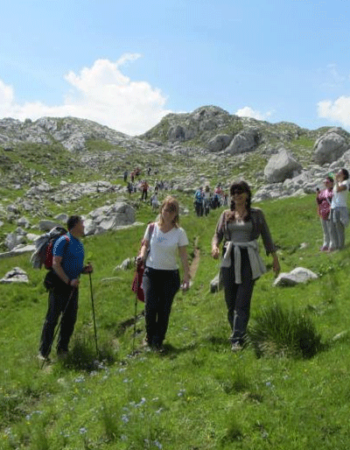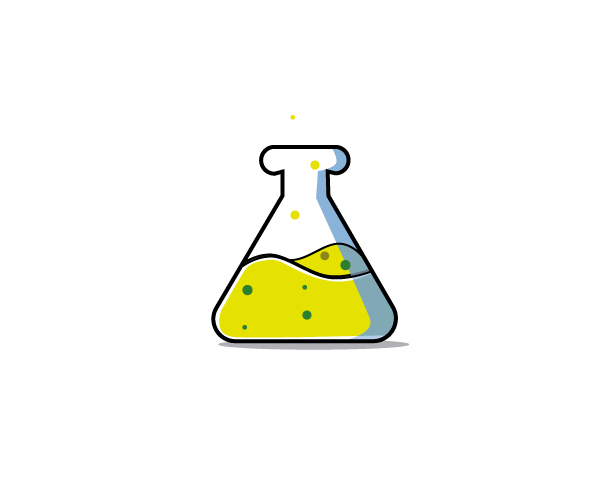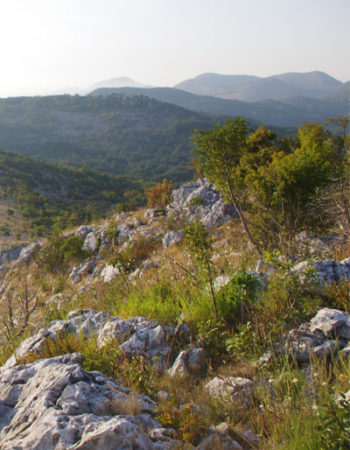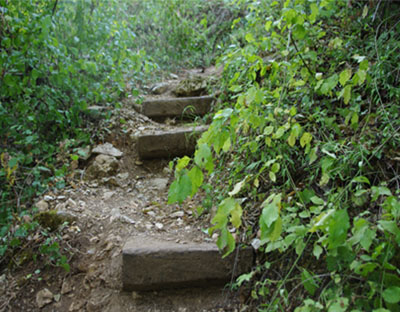Lyme Disease Treatment
Natural treatment of chronic lyme disease in Berlin
One of our specialisations at my clinic and mine as a doctor is diagnosing & treating Lyme Disease naturally. We are one of the leading clinics in treating lyme disease in German, having treated and diagnosed hundreds of patients. But it all started with my son in 2008 who was diagnosed with chronic fatigue and depression by many doctors. I decided to do multiple alternative examinations and diagnostics at my clinic to find the root cause for his problems and we found out he had lyme disease. After this I tested all my patients for lyme disease and was shocked at how many people suffered from it.

what cuases lyme disease

Lyme disease is the most common tick-borne disease in Europe and North America. It is caused by four main species of borrelia bacteria. Exactly saying they are spirochete: Borrelia burgdorferi and Borrelia mayonii cause Lyme disease in the United States, while Borrelia afzelii and Borrelia garinii are the leading causes in Europe and Asia.
At Praxis Lemm we provide a combination of different treatment methods for lyme disease tailored for our patients individual needs.
Lyme disease causes neurological, neurocognitive and orthopaedic problems like arthritis. They are relatively easily treated but the co-infections which are very often next to borrelia are more difficult to treat.
diagnosis for lyme disease
It should be pointed out that the literature published by universities as well as the official statements of the RKI and the guidelines e.g. of the German Society for Neurology are to be regarded as out of date from today’s perspective and thus both the diagnostic and the therapeutic strategies are subject to considerable modifications.
We are using the following tests in Praxis Lemm: different antibodies tests, ltt borrelien in lymphocyte and dark field microscopy. We combine the tests with medical history and symptoms. In unclear cases, ideally, we use two different types of tests.
Very often are found negative results and sometimes also false positive results. We like to take different types of tests and if there are two positive results together with symptoms and medical history we make a diagnosis.
It is necessary to first apply Enzyme-linked immunosorbent assay (ELISA better western blot ) to Bb IgG and IgM, in case of suspected Lyme disease, based on symptoms and signs of the disease. Determination of rheumatic factor (RF) and VDRL in the blood eliminates the most common false-positive results.
If the ELISA is positive, confirmation (due to the possibility of false positives) is also required with Western Blot analysis which proves the specificity of the previous finding, which, if not confirmed by this second method, may be incidental (false negative finding). False positive and / or misinterpreted laboratory findings are a common cause of these patients wandering from one doctor to another without adequate help.
Liquid inflammatory syndrome is most commonly present in patients with meningitis and / or encephalitis within the LNB. In LNB, antibodies to Bb in blood and in CSF are required in parallel. Although some groups of authors consider inflammatory syndrome in CSF a mandatory criterion in the diagnosis of LNB, the experience of other authors shows that this is not always mandatory.
Non-specific changes in white mass on magnetic resonance may be found in some patients with brain involvement. These changes in white mass are not specific to LNB and can occur in various diseases and even in healthy ones. The patient should be treated, not the magnet.
Antibodies can be negative for the first 6 weeks. Only spirochete cultures in CSL and PCR can be positive at this stage, which is nowhere near standard procedure, nor reliable enough.
It is always necessary to rule out other causes of current interference, as errors in diagnosis are common. IgM has no diagnostic significance in late LNB and, if isolated, is generally a false positive and is caused by some other disease. IgM class antibodies have been emerging since the third week, and IgG antibodies from the sixth week since the infection of the infected tick.
IgG antibodies most often remain positive for life after successful treatment of Lyme disease. Some people did not even survive the evident Lyme disease, but they still had a positive antibody titer to contact with Bb and this did not require any treatment.
Re-determination of the antibody titre has no clinical significance in the treated. In rare cases, positive and specific IgM antibodies remain paradoxically. IgG and IgM antibodies can persist in the cerebrospinal fluid long after adequate therapy and without any evidence of active neurological disease.
Repeated serological testing is not indicated as it does not show the effectiveness of therapy (persistence of IgM and IgG; changes in titer do not reflect the success of therapy). IgG has been maintained for years and is not a marker of disease activity unless the titer grows again significantly, which will only be done if one has new disorders.



Lyme disease prevention

Only about 30% of ticks are infected with Bb and transmit the infection, but the tick needs to remain on the skin for at least 24 hours. That is why it is of great importance that after every stay in nature, even if it is a city park, a thorough examination of the skin should be made for the possible presence of ticks.
The prevention of Lyme disease begins with the control of the transmission-reservoir of Bb infection. The simplest measures are weed pruning, densities, piles of leaves and branches, protecting pets, and combating small rodents.
Personal protection measures are appropriate clothing (long sleeves and socks, hat, etc.) and repellents that repel ticks. A thorough examination of the skin after a stay in nature is mandatory.
Early intensive treatment of EM and “flu like disease” and early LNB is important in preventing the onset of later Lyme disease. Early professional removal of ticks from the skin is very important so as not to “inject” the blood into the blood by inadvertently pressing the body of the tick.
It is necessary to grasp the tick by the rill rather than the body and remove it with a simple bow movement.
The place is wiped with an antiseptic (alcohol, etc.).
treatment of lyme disease
Antibiotic therapy is a tool for the etiological (causal) treatment of Lyme disease and LNB. Although in most cases Lyme disease and within it LNB is a good prognosis that goes away spontaneously (without treatment) and without consequences, and especially with the administration of specific antibiotics.
A proper diagnostic procedure should be performed beforehand to prevent long-term therapy with non-LNB diseases. This can lead to unnecessary complications.
In the earlier stages, the efficacy of oral doxycycline 200 milligrams per day for 14 days was demonstrated.
If the conditions for safe LNB are met and therapy is no longer effective after more than 6 months, the condition is called post Lyme syndrome. In this syndrome, antibiotic therapy has no effect.
Doxycycline is contra-indicated in children under 9 years of age.

therapies
- Antibiotics in acute Lyme disease
- Nutritional advice
- Herbal therapy
- Immune booster substances
- Detox of the toxins
- Mind therapies
- Lifestyle advice
- Psychological Support
Antiobiotics in acute lyme disease
We are recommending Doxycycline together with herbal extracts, but we are completely happy to treat with the herbal extracts if a patient rejects Doxycycline. Because Doxycycline is killing microbiome, I give together with it probiotics and I compare what Doxycycline is doing as an effect. Is the side-effect really compared to the healing of borreliosis very little and should be taken in account..
nutritional advice
Anti-inflammatory diet has the best additional effects to the therapy and needs to be adapted to a current state of the diet of a patient.
immune booster substances
There are special infusions like high doses of Vitamin C or Omega 3. It is very important to know if you have an overreacting or weak immune system. Recommendations are done according to an individual personal status.
detox of the toxins
In the case that the immune system is blocked with too many heavy metals, we need to detoxify and enable the immune system to function. We need a harmonized and functional immune system in order to enable the body to heal and support the effect of substances we give.
mind therapies
We are recommending and teaching relaxation techniques, meditation, cleansing and supporting subconscious mind with: EMDR and hypnosis. We have really good experience with wing wave therapy which is combining EMDR and kinesiology. Also, PSYCH-K® (PK-psychological kinesiology) from the Dr. Klinghardt .
lifestyle advice
Very often it is necessary to teach the patients to change unhealthy behaviour and to be able to recognise what it is good or harmful for their health.
psychological support
Very often borrelien patients have a lack of will to live and need a booster of motivation not to give up. Usually , hope in healing has been lost because they usually had visited many doctors and major part of them even had ignored and treated only depression with antidepressant which in this case very rarely helps.
how ticks infect us & how borrelien develop

Mechanisms of the direct action of spirochetes and / or immune-mediated mechanisms and / or action of cytokines and other inflammatory mediators are hypothesized.
Ticks live for several years and go through four stages: eggs, larva, nymph and adult. Larvae, nymphs and adults feed on the blood of animals and humans.
Each stage lasts about one year and the tick is fed at each stage only once, increasing a couple of hundred times. The reservoir of Bb infection are animals, most often small rodents.
The ticks are active from spring, and when vegetation is established, until late fall when the leaves fall. The ticks reside on vegetation: grass, fallen leaves, shrubs, lower trees up to 1.5 meters above the ground. The ticks can remain on the skin for several hours looking for a suitable place to stab the host. When the introduction comes, the host does not feel it because there is a natural anesthetic in saliva ticks.
The tick can thus go unnoticed, suck up blood and leave the host. It then rests until the next season when it moves into the senior stage. Adult ticks lay their eggs, thus ending their life cycle. The following spring, the larvae are laid from the eggs and thus a new cycle is established. The larvae are at least 1 mm in diameter and are rarely spotted. Nymphs are larger and adults are the largest, like pepper grains when they are sucked into the blood.
lyme disease accurs in three stages
- Erythema nodosum / early localized disease
- Wound disseminated (widespread)
- Chronic stage / Late disseminated disease
erythema nodosum / early localized disease
In the first stage occurs Erythema migrans (EM) so during this stage we, in Praxis Lemm, recommend antibiotic Doxycycline. This is known for its anti-aging and longevity treatment, which makes it one of the best antibiotics.For a skin change to be an EM change, it must have a diameter of at least 5 centimeters. Minor changes at the injection site are a local reaction and are not a sign of infection. In rare cases, flu-like disease and meningism (neck stiffness) occur. Neurological disorders are less likely to occur in the first stage. The neurological first stage can be manifested by headache, muscle aches and fever, with or without EM.
The specific antibody titers in the blood are negative at that stage of the disease and the diagnosis is based solely on the recognition of the clinical picture and epidemiological data on the tick sting.
wound disseminated (widespread)
During the second stage, manifestations that occur are neurological, joint inflammation, cardiac ( heart rhythm) and dermatological ( benign skin lymphocytes), in addition to them there are manifestations on the brain and peripheral nerves. The diseases that occur in this case are neuritis, meningitis and encephalitis.
The most typical second stage LNB manifestations are:
- Painful meningoradiculitis (painful inflammation of the meninges and nerve roots) or Garin-Bujadoux-Bannwarth syndrome (GBBS).
- Plexitis, myositis, brain pseudotumor, vasculitis, ataxia and other clinical pictures are less likely to occur.
- Cranial mono- and polyneuritis (involvement of the head nerves, one or more).
- Meningitis (inflammation of the brain sheaths).
- Myelitis (inflammation of the spinal cord).
- Encephalitis (inflammation of the brain).
Painful meningoradiculitis occurs within the first four months of tick bite.Changing pain sites, weakness of the arms and legs, inflammation of the peripheral nerves, and trapped neck are noted. The cerebrospinal fluid (cerebrospinal fluid) contains pleocytosis (increased cell count), hyperproteinorrhagia (increased protein content), as well as some other indicators.Reporting season is late spring, summer and early fall, when ticks are active.In the case of encephalitis at this stage, cognitive outbreaks are possible, so the picture looks like dementia.Peripheral paralysis of the facial nerve in the LNB can be unilateral or bilateral.It accounts for 14-24% of Bell’s paralysis of adult facial palsy, and in children up to 75% of Bell’s paralysis.The reason is that children are shorter and ticks are more often injected into the area of the head and neck, from which pathogens can more easily reach the nerve.The disorder occurs in spring and summer. The prognosis is good.
chronic stage / late disseminated disease
The third stage can occur without noticeable first two stages, and patients often do not even remember the tick sting.During this stage we can notice the appearance of neurological, rheumatological and dermatological phenomena (Acrodermatitis chronica atrophicans – ACA, morphea, a typical skin change of the third stage of Lyme disease) . The manifestations that appear during this stage include progressive encephalomyelitis, encephalopathy, neuropathy (with and without ACA), dementia, myositis, CNS granulomatous tumor, and vasculitis. Progressive encephalomyelitis (brain inflammation and progressing spinal cord) is characterized by the appearance of spastic paresis, ataxia, damage to the cranial nerves (VII and VIII), micturition and other signs. The cerebrospinal fluid (cerebrospinal fluid) contains pleocytosis, hyperproteinorrhagia, oligoclonal response, and immunoglobulin synthesis in the central nervous system (intrathecal) IgG, IgM, and IgA classes.
Patients usually do not remember the tick sting, EM or GBBS or other manifestations of previous stages. LNB encephalopathy produces fatigue, memory impairment, headache, confused states, depression, daytime drowsiness, irritability, and object recall.
Magnetic resonance imaging shows slight damage to the brain’s white mass. The generation of specific antibodies to Bb are found in the central nervous system in about 50% of cases. Patients often respond poorly to therapy. This is the form that most often presents a differential diagnosis to other forms of dementia and other diseases. Laboratory confirmation of active Bb infection and thorough neurological and psychiatric testing are required.
Neuropathy (peripheral nerve damage) with ACA is sensitive (95%), muscle reflexes are reduced or quenched (50%), and weakness (2%), numbness of limb completion, pain, weakness, and muscle cramps occur.
Lyme neuroborreliosis is very often a symptom in late chronic state.
lyme neuroborreliosis
Lyme neuroborreliosis is a disease of the central (brain and spinal cord) and peripheral nervous system (nerves), accounting for 10-15% of all Lyme disease cases and has potentially the most serious consequences. This patient needs the most support in all directions. Depression almost always emerges from borrelia and, therefore, requires intensive treatments on all levels. However, one of the most important ones is to increase motivation and will to live. In Praxis Lemm, we seek to give realistic hope that symptoms have a big chance to decrease.

diseases to be distinguished from lyme disease

Often misdiagnosis of Lyme disease is based on the wrong criteria and patients receive unnecessarily high doses of antibiotics with potential side effects that are potentially very dangerous.Less common, though, are the inverse errors of not recognizing Lyme disease. Consideration is given to a large number of diseases.These are: painful conditions (spondylosis, discopathies, metastases, herpes radiculitis, gastric ulcer, myocardial infarction, renal and gall bladder calculosis), chronic non-pyogenic infections of the central nervous system (fungal and viral infections, babesiosis, ehrlichiosis, and other diseases) polyradiculoneuritis, tick encephalitis, multiple sclerosis, second cause dementia, second cause hypersomnia, stroke, brain tumor and pseudotumor, amyotrophic lateral sclerosis, second cause epilepsy, psychiatric diseases, endo myelitis, collagenopathy , chronic fatigue syndrome, vitamin deficiencies and more.Not recognizing these diseases and misdiagnosing them as Lyme Disease can have serious consequences.
coinfections in borreliosis
- Chlamydia pneumoniae.
- Yersinia, especially Yersinia enterocolitica (diarrheal disease)
- Bartonella henselae (cat scratch disease pathogen).
- Ehrlichiosis
- Rickettsiae
- Babesia (in Germany most common Babesia microti).
- TBE (early summer meningoencephalitis).
Chlamydia pneumonie
This pathogen is found in the lungs and in the airways and initially causes corresponding symptoms including sinus infections. In the late phase (visible in the laboratory results), the muscles, especially the skeletal muscles, joints and the nervous system, can spread. Older Chlamydia pneumoniae infections may also require targeted treatment. Medical studies have shown that Chlamydia pneumoniae promotes the development of arteriosclerosis.
yersinia, especially yersinia enterocolitica
These pathogens occur in raw meat, in the feces of domestic and wild animals (e.g. rabbits, foxes, birds, dogs) and also in unwashed lettuce, fruit and vegetables. The Yersinia triggers diarrhea in the acute stage and is responsible for muscle and joint complaints (Yersinia-induced arthritis) in the later stages, along with neurological, neuropsychological and neurocognitive disorders.
bartonella henselae (cat scratch disease pathogen)
This is a tick-borne disease that is also possible through contact with cats. This condition causes dermatological and neurological symptoms.
Ehrilichiosis
This tick-borne disease causes fever, muscle pain and neurological and Skin.
Rickettsiae
Again, this is a tick-borne disease that causes skin changes, muscular and neurological, and sometimes even cardiological problems. Rickettsia also occurs worldwide in various forms and can also be transmitted during trips abroad.
babesia (in german most common babesia microti).
This is a tick-borne disease that is also spread worldwide. In contrast to previous findings, these pathogens are not only widespread in the Mediterranean and the east coast of the USA, but also in the Alpine region. A study from Austria shows that around 35% of ticks are infected with Babesia. The pathogens can trigger the following symptoms: Muscle pain, fever, joint pain, dark urine, and enlarged spleen.
tbe (early summer meningoencephalitis).
In contrast to the above pathogens, it is a tick-borne viral infection that leads in particular to neurological symptoms. Overall, only symptomatic therapy is possible after infection. An effective protection you receive only through previous vaccination.
